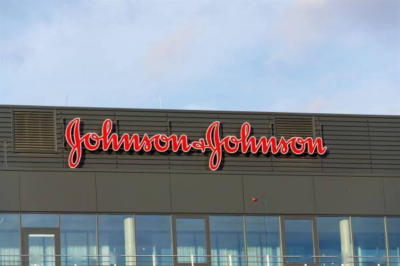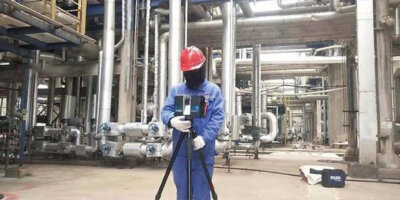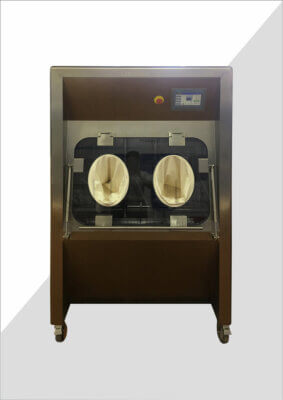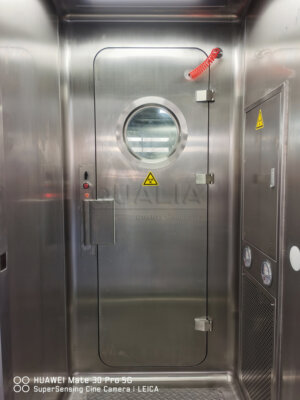In an era where access to clean water is increasingly critical, understanding effective water decontamination methods has never been more important. From industrial applications to household use, the process of removing contaminants from water is crucial for health, safety, and environmental protection. This article delves into various water decontamination techniques, exploring their effectiveness, applications, and implications for different sectors.
Water decontamination encompasses a range of methods designed to remove or neutralize harmful substances in water. These techniques include physical filtration, chemical treatments, biological processes, and advanced technologies like UV radiation and reverse osmosis. Each method has its unique strengths and is suited to different types of contamination and scales of operation. As we explore these methods, we'll examine their principles, implementation, and the contexts in which they're most effective.
As we transition into the main content, it's important to note that the choice of decontamination method often depends on the specific contaminants present, the volume of water to be treated, and the intended use of the water. From large-scale municipal water treatment to portable solutions for outdoor enthusiasts, the field of water decontamination is diverse and constantly evolving.
Water decontamination is a critical process that ensures the safety and quality of water for various uses, from drinking to industrial applications. Effective decontamination removes or neutralizes harmful substances, including pathogens, chemicals, and particulate matter, making water safe for consumption and use.
| Decontamination Method | Primary Contaminants Targeted | Effectiveness | Scale of Use |
|---|---|---|---|
| Chlorination | Bacteria, Viruses | High | Large-scale |
| UV Radiation | Bacteria, Protozoa | High | Small to Medium |
| Reverse Osmosis | Dissolved Solids, Chemicals | Very High | Small to Large |
| Activated Carbon Filtration | Organic Compounds, Chlorine | High | Small to Medium |
| Boiling | Pathogens | High | Small-scale |
| Ozonation | Bacteria, Viruses, Odors | Very High | Medium to Large |
What are the primary physical methods of water decontamination?
Physical methods of water decontamination rely on mechanical processes to remove contaminants from water. These techniques are often the first line of defense in water treatment systems and can be highly effective for removing particulate matter and larger organisms.
Key physical decontamination methods include filtration, sedimentation, and distillation. Filtration, in particular, is widely used in both large-scale and household applications, ranging from simple mesh screens to advanced membrane filtration systems.
One of the most advanced physical decontamination methods is reverse osmosis, which uses a semi-permeable membrane to remove a wide range of contaminants, including dissolved solids and many types of chemicals. (QUALIA)'s Effluent Decontamination System (EDS) for BSL-2, 3, and 4 liquid waste utilizes advanced filtration techniques to ensure thorough decontamination of hazardous biological materials.
Physical water decontamination methods can remove up to 99.9% of particulate matter and microorganisms from water, making them an essential component of comprehensive water treatment systems.
| Filtration Method | Pore Size | Contaminants Removed |
|---|---|---|
| Microfiltration | 0.1-10 μm | Bacteria, Protozoa |
| Ultrafiltration | 0.01-0.1 μm | Viruses, Colloids |
| Nanofiltration | 0.001-0.01 μm | Dissolved Solids |
| Reverse Osmosis | <0.001 μm | Most Contaminants |
How do chemical treatments contribute to water decontamination?
Chemical treatments play a crucial role in water decontamination by neutralizing or removing contaminants through chemical reactions. These methods are particularly effective against pathogens and can also address issues like odor and taste.
The most common chemical treatment is chlorination, which has been used for over a century to disinfect drinking water. Other chemical methods include the use of iodine, hydrogen peroxide, and more advanced oxidation processes.
Chemical treatments can be highly effective and are often used in conjunction with physical methods for comprehensive water decontamination. For instance, (QUALIA)'s EDS system may incorporate chemical treatments as part of its multi-stage decontamination process for handling highly contaminated effluents from biosafety laboratories.
Chemical water treatment methods can achieve up to 99.99% reduction in waterborne pathogens, making them a cornerstone of public health protection in water systems worldwide.
| Chemical Treatment | Active Agent | Primary Use |
|---|---|---|
| Chlorination | Chlorine | Disinfection |
| Iodination | Iodine | Emergency Disinfection |
| Advanced Oxidation | Hydroxyl Radicals | Organic Contaminant Removal |
| Coagulation | Aluminum Sulfate | Particle Removal |
What role does biological treatment play in water decontamination?
Biological treatment methods harness natural processes to remove contaminants from water. These techniques are particularly effective for treating organic pollutants and are often used in wastewater treatment plants.
The most common biological treatment is the activated sludge process, which uses microorganisms to break down organic matter. Other methods include trickling filters and constructed wetlands, which mimic natural ecosystems to purify water.
While not typically used for drinking water treatment, biological methods are crucial for environmental protection and water reclamation. They can be particularly effective when combined with other treatment methods, as seen in advanced wastewater treatment systems.
Biological treatment methods can remove up to 95% of organic pollutants from wastewater, significantly reducing the environmental impact of human activities on water resources.
| Biological Method | Process Type | Primary Contaminants Removed |
|---|---|---|
| Activated Sludge | Aerobic | Organic Matter, Nutrients |
| Anaerobic Digestion | Anaerobic | Organic Matter |
| Constructed Wetlands | Natural | Nutrients, Pathogens |
| Biofiltration | Aerobic/Anaerobic | Organic Matter, Odors |
How effective are UV and ozone treatments in water decontamination?
UV and ozone treatments represent advanced physical-chemical methods of water decontamination. These techniques are highly effective against a wide range of pathogens and can also address certain chemical contaminants.
UV treatment uses ultraviolet light to disrupt the DNA of microorganisms, rendering them unable to reproduce. Ozone treatment, on the other hand, uses ozone gas to oxidize contaminants and disinfect water.
Both methods are gaining popularity due to their effectiveness and the fact that they don't add chemicals to the water. (QUALIA)'s EDS system may incorporate UV or ozone treatments as part of its advanced decontamination process, ensuring thorough inactivation of biological contaminants in laboratory effluents.
UV and ozone treatments can achieve up to 99.99% inactivation of waterborne pathogens without the use of chemical additives, making them ideal for sensitive applications.
| Treatment | Mechanism | Advantages | Limitations |
|---|---|---|---|
| UV | DNA Disruption | No Chemicals, Fast | No Residual Effect |
| Ozone | Oxidation | Broad Spectrum, No Taste | Short Half-life |
What are the emerging technologies in water decontamination?
The field of water decontamination is constantly evolving, with new technologies emerging to address increasingly complex water quality challenges. These innovations aim to improve efficiency, reduce costs, and tackle previously difficult-to-treat contaminants.
Some promising emerging technologies include graphene-based filters, which offer exceptional filtration capabilities at the molecular level, and nanotechnology-enhanced membranes that can selectively remove specific contaminants. Additionally, advanced oxidation processes using combinations of UV, ozone, and hydrogen peroxide are being developed for the treatment of recalcitrant pollutants.
(QUALIA)'s research and development in water treatment solutions may incorporate some of these cutting-edge technologies to enhance the effectiveness of their decontamination systems, particularly for challenging applications like BSL-4 laboratory effluents.
Emerging water decontamination technologies have the potential to increase treatment efficiency by up to 50% while reducing energy consumption and operational costs.
| Technology | Principle | Target Contaminants |
|---|---|---|
| Graphene Filters | Nano-scale Filtration | Dissolved Solids, Pathogens |
| Advanced Oxidation | Radical Generation | Persistent Organics |
| Capacitive Deionization | Electrical Charge | Dissolved Ions |
| Photocatalysis | Light-activated Catalysts | Organic Pollutants |
How do portable and emergency water decontamination methods differ from large-scale systems?
Portable and emergency water decontamination methods are designed for rapid deployment and ease of use in situations where access to large-scale treatment facilities is not available. These methods often prioritize simplicity and effectiveness over the comprehensive treatment provided by municipal systems.
Common portable methods include boiling, chemical disinfection tablets, and portable filtration devices. These techniques are crucial for disaster relief, outdoor recreation, and in regions with limited water infrastructure.
While not as thorough as large-scale systems, portable methods can provide safe drinking water in emergency situations. The principles behind these methods often inform the development of more advanced systems, including those used in (QUALIA)'s EDS for laboratory settings.
Portable water decontamination methods can reduce the risk of waterborne diseases by up to 85% in emergency situations, highlighting their critical role in public health during crises.
| Method | Ease of Use | Effectiveness | Best For |
|---|---|---|---|
| Boiling | High | High | Pathogens |
| Chemical Tablets | High | Medium | Bacteria, Viruses |
| Portable Filters | Medium | High | Particulates, Some Pathogens |
| Solar Disinfection | High | Medium | Pathogens |
What are the environmental implications of different water decontamination methods?
The environmental impact of water decontamination methods is an increasingly important consideration in the selection and implementation of treatment systems. Different methods can have varying effects on energy consumption, chemical usage, and waste production.
Physical methods like filtration generally have a lower environmental impact but may require frequent replacement of filter materials. Chemical treatments can be effective but may introduce substances into the environment. Advanced methods like UV and ozone treatment often have a smaller environmental footprint but may require more energy.
Biological treatments, while often used for wastewater, can be highly sustainable and environmentally friendly. The development of eco-friendly decontamination methods is an ongoing focus in the industry, with companies like (QUALIA) working to minimize the environmental impact of their treatment systems.
Implementing energy-efficient and environmentally friendly water decontamination methods can reduce the carbon footprint of water treatment by up to 30% compared to traditional methods.
| Method | Energy Use | Chemical Use | Waste Production |
|---|---|---|---|
| Reverse Osmosis | High | Low | Medium |
| Chlorination | Low | High | Low |
| UV Treatment | Medium | None | Low |
| Biological Treatment | Low | Low | High (Biodegradable) |
In conclusion, water decontamination is a complex and multifaceted field that encompasses a wide range of methods and technologies. From traditional techniques like filtration and chlorination to advanced processes like UV treatment and emerging nanotechnologies, the options for ensuring clean, safe water are diverse and continually evolving.
The choice of decontamination method depends on various factors, including the type and level of contamination, the scale of treatment required, and the specific application. Large-scale municipal systems may employ a combination of methods to ensure comprehensive treatment, while portable solutions focus on simplicity and effectiveness for emergency situations.
As water quality challenges become more complex, the importance of innovative and efficient decontamination methods grows. Companies like (QUALIA), with their advanced Effluent Decontamination System (EDS) for BSL-2, 3, and 4 liquid waste, are at the forefront of developing solutions for specialized applications. These advancements not only improve water safety but also contribute to broader goals of environmental sustainability and public health protection.
The future of water decontamination lies in the development of more efficient, environmentally friendly, and adaptable technologies. As research continues and new challenges emerge, the field will undoubtedly see further innovations that enhance our ability to provide clean, safe water for all uses, from drinking water supplies to industrial applications and beyond.
External Resources
Water Disinfection | CDC Yellow Book 2024 – This resource provides a comprehensive overview of various water disinfection methods, including heat, filtration, chemical disinfection, and ultraviolet radiation, along with their advantages and disadvantages.
Household Water Treatment: Disinfection Methods and Devices – This publication details common household water treatment methods such as chlorination, UV radiation, ozonation, pasteurization, and distillation, and discusses the equipment and processes involved.
About Household Water Treatment – CDC – This resource outlines various methods to make water safe, including boiling, chlorination, using filters, and solar disinfection, and emphasizes the importance of considering water quality and community needs.
Emergency Disinfection of Drinking Water | US EPA – This guide provides instructions on how to disinfect water in emergency situations using methods such as boiling, household bleach, granular calcium hypochlorite, and iodine.
Water purification – Wikipedia – This article covers a wide range of water purification methods, including physical processes like filtration and distillation, biological processes, and chemical processes such as coagulation and flocculation.
Water Disinfection Techniques – Although not directly linked, the WHO provides extensive resources on water disinfection techniques, including guidelines on boiling, solar disinfection, and chemical treatment, which can be found through their water, sanitation, and hygiene section.
Safe Drinking Water: A Guide to Water Disinfection – This guide discusses various water disinfection methods, including chlorine disinfection, ozone treatment, and UV light, and provides insights into the effectiveness and maintenance of these systems.
Water Treatment and Disinfection – This resource from the American Water Works Association offers detailed information on water treatment and disinfection processes used in public water systems, including chlorination, ozonation, and UV treatment.
Related Contents:
- Decontamination Systems: Safeguarding Health and Environment
- Effluent Decontamination: Safeguarding Our Environment
- Decontamination Cleaning: Ensuring Safety Through Thorough Sanitization
- Effluent Decontamination Systems (EDS) by QUALIA: Protecting Public Health and the Environment
- Application of Biological Treatment Methods for Different Types of Wastewaters
- How Biological Wastewater Treatment Systems Work: A Detailed Overview
- Revolutionizing Water Treatment: QUALIA’s Effluent Decontamination System (EDS)
- Biological Wastewater Treatment System: The Ultimate Solution for High-Infectious Waste
- Top Benefits of Using a Biological Wastewater Treatment System in Your Facility





























